If you’ll recall, we left off from part one with John Conway sitting amazed at the “glider” that moves across the Life universe. Here it is again:

Isn’t that cool? It’s cool. Want to know why? Because life is cool. Also, because Life is cool.
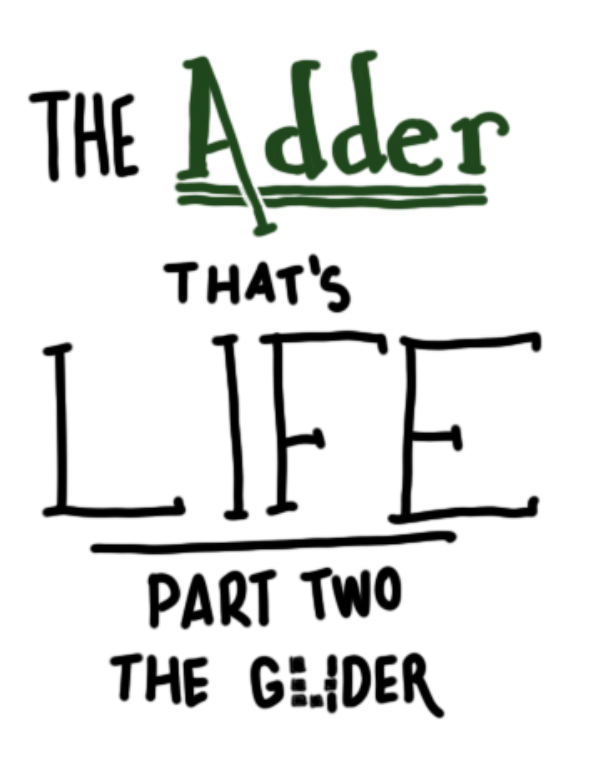
I should note that the “R-pentomino” from the last post eventually does settle (at generation 1103). It forms this; I’ve labeled the patterns; pay particular attention to the blocks and beehives, because I expand on their properties later:
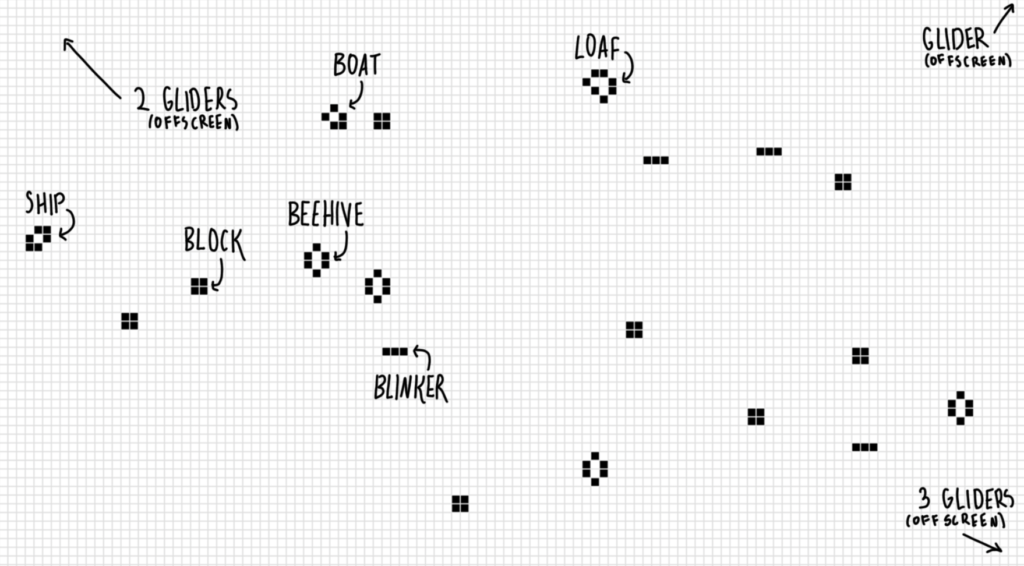
One important result of this experimentation was his getting on the October 1970 version of Martin Gardner’s Scientific American “Mathematical Games” column. Here, he expressed an opinion. Gardner writes:

His theory was that no pattern can continue growing forever.
Conway offered a US$50 prize for anyone who could disprove this. He noted that one way to do this was to create a “gun”: a pattern that fires gliders or other moving patterns at regular intervals. (See the first picture in part one to get an idea for what I’m talking about, or just keep reading.)
Guess what? Conway was wrong. Who found this infinite-growth pattern? Bill Gosper.
Gosper was an interesting dude, and he’s almost another post in himself. For now, I’ll say that he lent his name to a curve, an algorithm, and a gun.
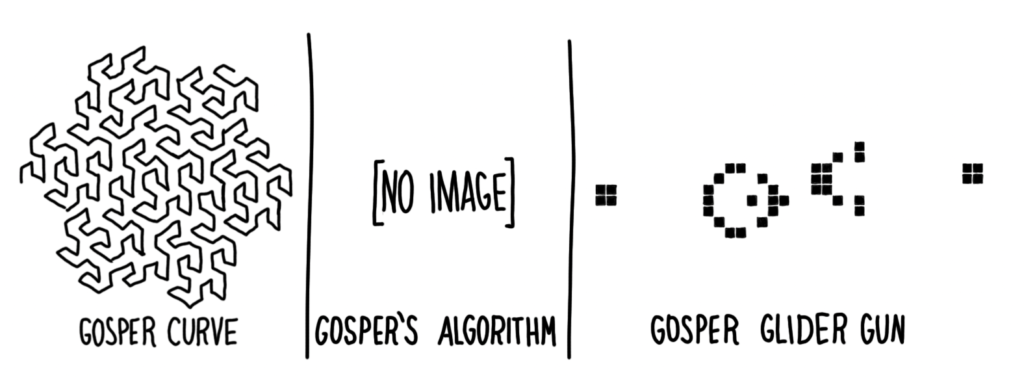
Of course, we are interested in the gun. How does it work? There are two queen bee shuttles. In the shuttles, two main mechanisms are at play: there are two blocks and two queen bees.
We’ll start with the blocks. You’ve seen the block before. The property of it that’s so useful in the shuttle, and by extension, the gun, is that if you place a block next to a beehive, over a period of seven generations the beehive disappears.

Why is this useful? We’ll take a look at the queen bee.
This is a queen bee:

And this is a queen bee after 15 generations:

Unfortunately, after making another beehive and flipping again, it crashes into the first beehive:

It then explodes, for lack of a better word, making further beehive generation difficult.
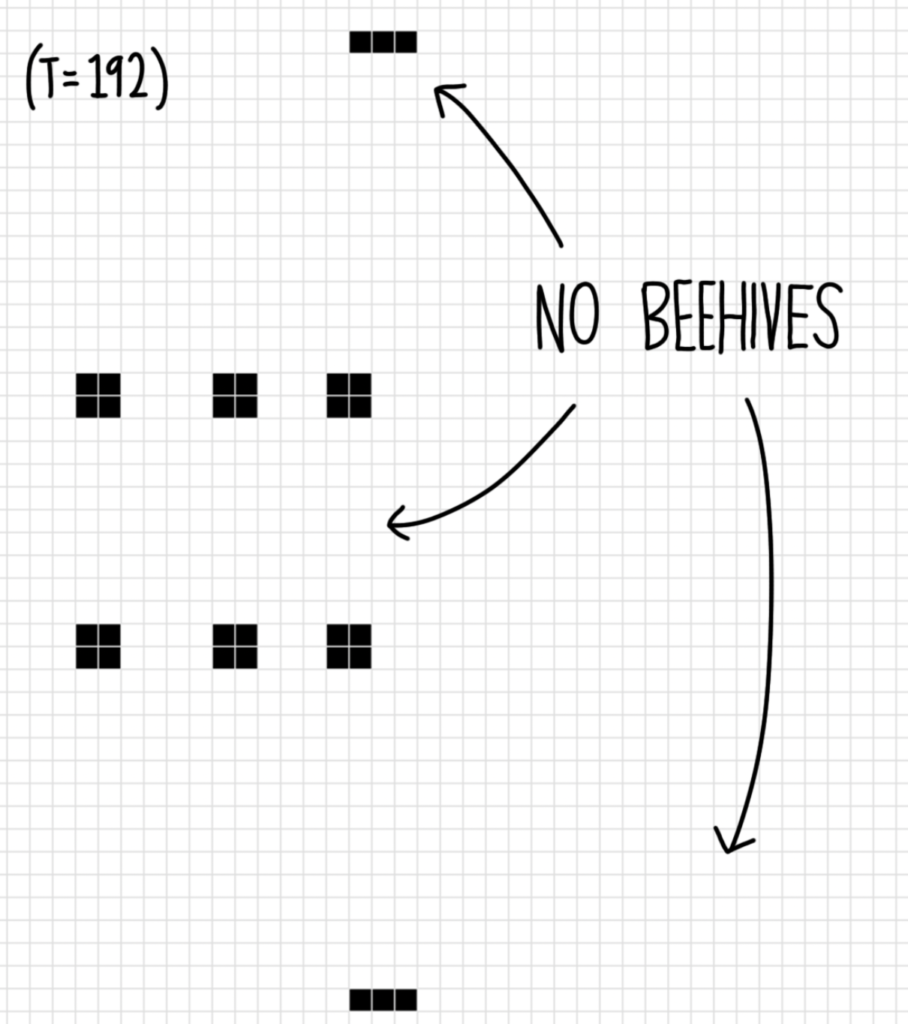
So what can one do to stop the bee from crashing into the beehive?
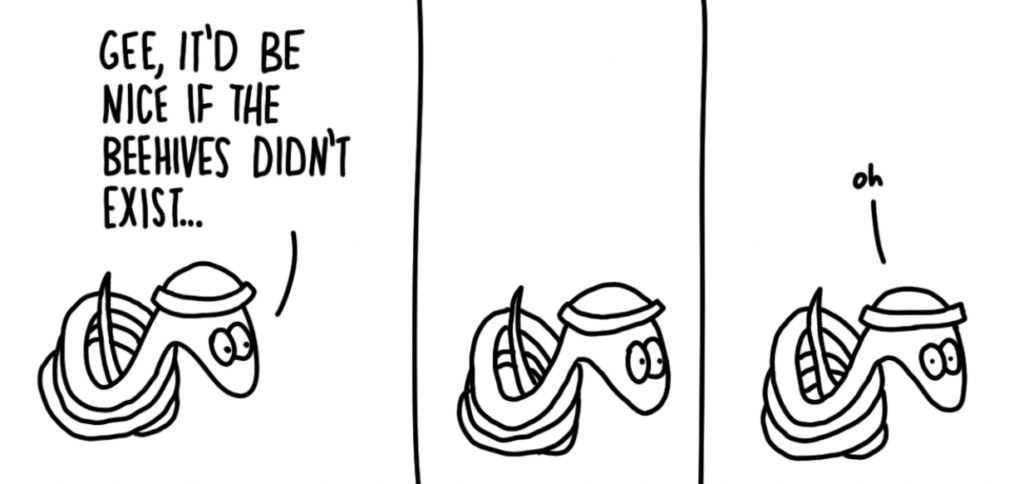
And thus is born the queen bee shuttle.

The blocks “eat” the beehives before the queen bee has a chance to crash into them.
Now, to make the Gosper glider gun, all you need is a way to combine two of them, like this:

But to make a glider gun, they need to crash together in a way that makes a glider:

Oh, hey! Look at this:

Hooray! Gosper gets the $50 prize. Everyone is happy. I mean, at least Gosper is happy. I’d assume Conway is happy, because it’s always cool to find a thing that shoots out an infinite amount of gliders. Look at it. That thing just keeps on firing gliders forever! If Life happened in the real world, that would be a perpetual motion machine!

The next post will be a really short one; I’ll examine software on which to play Life.1Advance apologies for any addictions and/or computer crashes that may or may not have been formed by playing Life on your computer. See you then!